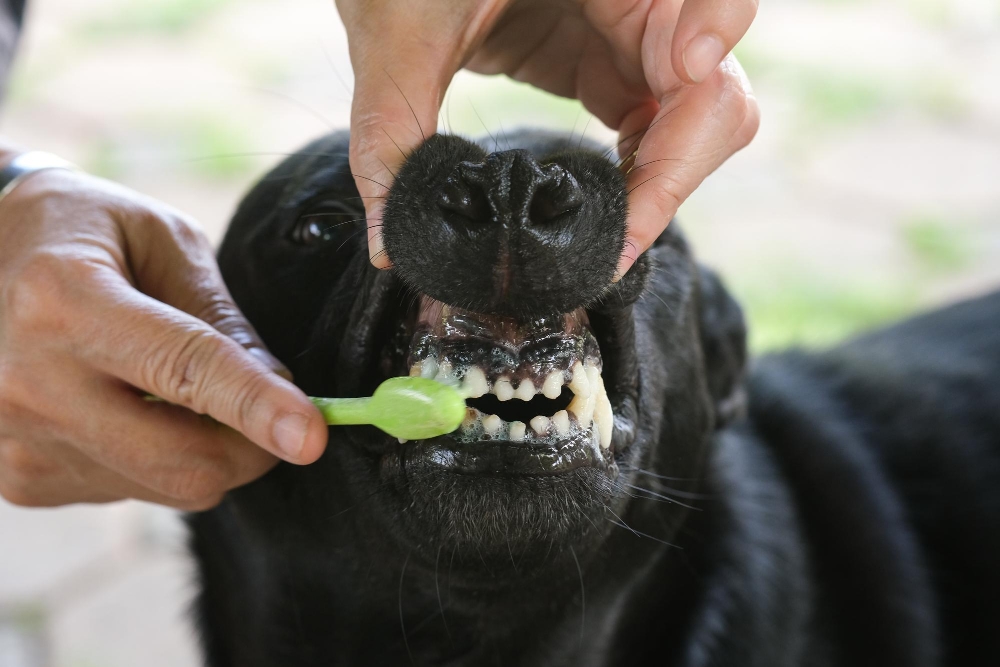No products in the cart.
We all adore our dogs—they're loyal companions, playmates, and family members. However, amidst the cuddles and playtime, it's easy to overlook the importance of regular grooming. Grooming goes beyond aesthetics; it plays a significant role in your dog's health. Whether a simple brush or a full dog grooming session, these routines can prevent health problems and keep your dog feeling its best.
Regular dog grooming sessions are perfect for checking your dog for unusual lumps, bumps, or skin issues. By routinely examining your pet, you can catch potential health problems early. Early detection is crucial for effective treatment, and grooming provides that first line of defense.
Tips for Early Detection:

A well-groomed coat isn't just shiny—it's a sign of good health. Brushing your dog removes dead hair, dirt, and dandruff. It also helps distribute natural oils throughout the coat, keeping the skin moisturized and reducing the risk of skin irritations. Regular dog grooming ensures your pet's coat stays healthy and vibrant.
Benefits of Regular Brushing:
For dogs with longer hair, matting can be a serious issue. Mats are not only uncomfortable but can also lead to skin infections. Regular brushing prevents tangles and mats from forming, ensuring your dog stays comfortable and healthy. Plus, it saves you from the tedious task of dealing with stubborn knots later on.
How to Prevent Matting:
During dog full grooming, you can check for fleas, ticks, and other parasites. These pests can cause severe discomfort and transmit diseases. Regular grooming and bathing remove parasites and allow for early detection so you can take prompt action to protect your dog.
Signs of Fleas and Ticks:
While not always associated with dog grooming, dental care is a vital part of your dog's health. Regular brushing of your dog's teeth prevents tartar buildup, bad breath, and gum disease. Dental problems can lead to more severe health issues, so incorporating teeth cleaning into your grooming routine is essential.
Tips for Good Dental Health:

Dogs are prone to ear infections, especially those with floppy ears. Regularly cleaning your dog's ears during dog full grooming sessions can prevent wax buildup and detect infections early. Healthy ears are less likely to harbor bacteria and yeast, keeping your dog comfortable and infection-free.
Steps for Cleaning Your Dog's Ears:
Overgrown nails can cause your dog discomfort and lead to posture problems or even injuries. Regular nail trimming prevents the nails from curling into the paw pad or causing joint issues. Keeping your dog's nails at an appropriate length ensures they can walk and run without pain.
How to Trim Your Dog's Nails:
Regular dog grooming is the solution if you're tired of finding dog hair all over your home. Brushing your dog removes loose hair before it can fall off around the house. This keeps your home cleaner and helps prevent hairballs in dogs that groom themselves.
Benefits of Controlling Shedding:
Grooming isn't just good for the coat; it can improve your dog's blood circulation. Brushing stimulates blood flow, promoting healthier skin and a shinier coat. This increased circulation can boost your dog's overall health and vitality.
Brushing Techniques for Better Circulation:
Spending time grooming your dog strengthens your emotional connection. It builds trust and helps your dog feel more comfortable with being handled. This bonding time can reduce stress for you and your pet, making future grooming sessions easier and more enjoyable.
Ways Dog Grooming Builds Bonding:
Neglecting regular grooming can lead to the following:
Regular dog grooming ensures your dog stays comfortable, healthy, and happy.
How often you groom your dog depends on the breed, coat type, and lifestyle:
Consult your groomer or vet to determine the best grooming schedule for your dog.
Professional grooming is often the better choice for dogs with thick coats or special grooming needs.
To effectively groom your dog at home, you'll need:
Having the right tools makes the grooming process smoother and more efficient.
Regular dog grooming is more than just a way to keep your pet looking great—it's a critical part of responsible pet care that ensures your dog's health, comfort, and overall happiness. From early detection of health issues to preventing parasites, strengthening your bond, and improving your dog's quality of life, regular grooming brings numerous benefits that can't be ignored.
Make grooming a consistent part of your dog's routine to keep it feeling and looking its best. If you're looking for expert help, consider Chewbarka Grooming, where your pet will receive the highest level of care in a safe and loving environment. Don't wait until problems arise—give your furry friend the care they deserve today!